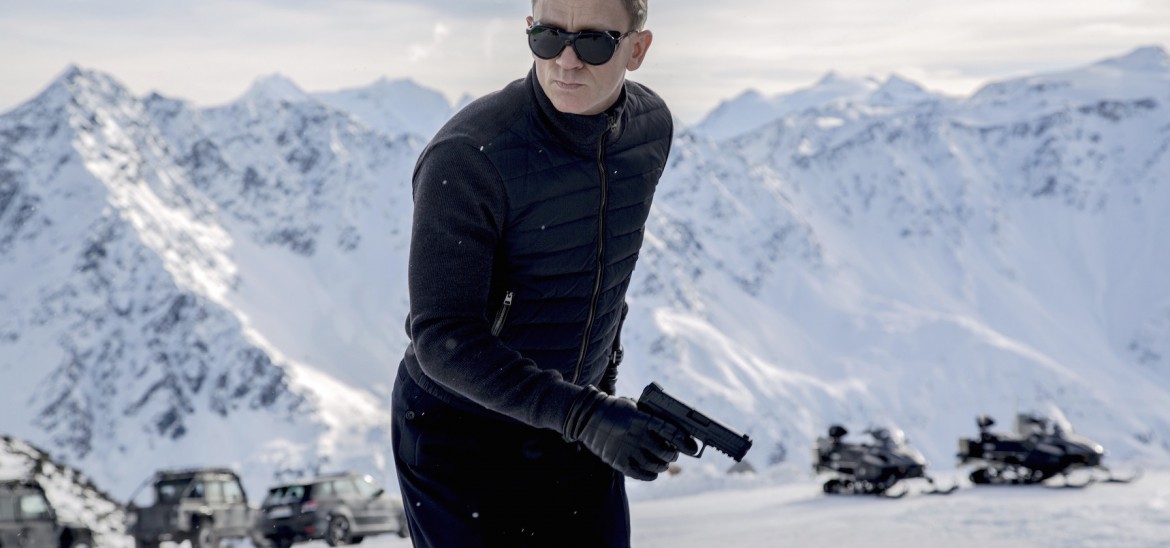Into Film Clubs
Find out everything you need to know about starting an Into Film Club.



Spectre is the 24th film in the James Bond series, a cinematic phenomenon that has been running since Dr. No in 1962. Daniel Craig returns for the fourth time, reuniting with director Sam Mendes following 2012's Skyfall, the UK's most commercially successful film of all time.
In this latest instalment, a cryptic message from Bond's past leads him on a mission around the world, as he gradually uncovers secrets about a nefarious criminal organisation known as SPECTRE and its mysterious leader Franz Oberhauser.
James Bond first appeared in a series of novels written by Ian Fleming in 1953, returning in films, comic strips, radio plays and computer games ever since. Fleming wrote 12 Bond novels, meaning the film producers ran out of his stories to tell a long time ago (although Casino Royale, Daniel Craig's first appearance, is based on the first 007 novel of the same name), and have developed their own stories. More recently however, the films - while original stories - have linked increasingly heavily to the origins of the character and some of the traits seen in the early films.
Perhaps as a result of anxieties around the Cold War, as well as Britain's influence starting to decline in global politics, Bond emerged during a crowded time for British spies on page and screen. It's fascinating to compare the fantasy figure of Bond with figures such as Michael Caine's Harry Palmer in The Ipcress File, Graham Greene's The Quiet American, or adaptations of the works of John Le Carré such as the brilliant Tinker Tailor Soldier Spy.
The character retains an extraordinary enduring appeal that is almost unique in popular culture. Although the films have not always been huge successes over the years, they have always reflected their historical context. Without giving too much away, the plot of Spectre very deliberately calls to mind contemporary conversations around surveillance and the right to privacy, with the entire existence of MI6 seemingly under threat.
The spectacular opening of Spectre was filmed during Mexico's legendary Day of the Dead, the nail-biting sequence including one unbroken four and a half minute shot around Mexico City. The scene involved 1,500 extras (many thousands more were added digitally), placed into elaborate costumes and makeup by a team of 107 artists, and stunning helicopter stunts which took place just 30ft over the heads of the crowd below! The highly choreographed rhythm of this scene and many others in the films demonstrates the influence of Sam Mendes, who made his name in the theatre before moving to film.
Even with such scale, filmmakers have to allow for things going wrong. Crucial parts of the scene were rewritten on the day of filming because Daniel Craig had damaged his knee and was unable to perform some of the physical work. It demonstrates how much filmmaking, regardless of budget, revolves around teamwork and ingenuity.
Allowances also had to be made for the climate. Due to a period of unseasonably warm weather when filming a sequence in Austria, 400 tonnes of manmade snow needed to be found fairly quickly in order for a crucial sequence on the slopes to be captured. Bond and snow have a long tradition and some of the series most memorable action sequences have taken place on the slopes, including in On Her Majesty's Secret Service, The Spy Who Loved Me and The World Is Not Enough.
Starting with the producers Michael G. Wilson and Barbara Broccoli, Bond films often have a family feel to them behind the scenes. Many unsung heroes have been with the series for several films including co-producer Andrew Noakes, special effects and miniatures supervisor Chris Corbould (a veteran of 14 Bond films), and visual effects supervisor Steve Begg. This helps to give the series a sense of continuity and strategic direction, ensuring that the formula is never too drastically altered! Watch our interview with Michael and Barbara in the side bar.
It takes many hundreds of people to make a film on the scale of Spectre. Luckily, the Bond producers are able to attract the highest level of talent across the board, including production designer Dennis Gassner, who started his career on Apocalypse Now; Christopher Nolan's regular editor, Lee Smith; Harry Potter costume designer Jany Temime and eclectic sound recordist Stuart Wilson. Their work often goes unmentioned, but they are all crucial components in making up the whole of what makes a successful and entertaining film for audiences.
One of the notable returning features in Spectre is the legendarily opulent lair of the Bond villain. Defined by the iconic elaborate sets designed by Ken Adam, Oberhauser's HQ bears all the hallmarks of the home of a classic Bond villain, but updated for the 21st century. SPECTRE itself harks back to the early days of Bond, playing crucial roles in six films between the time of From Russia With Love and Diamonds Are Forever. Connoisseurs of the Connery era 007 will be hugely excited to see how the organisation has been reinvented for the 21st century.
Q and Moneypenny, who returned in Skyfall, are back in this instalment too, as well as a new M. Whereas in the past Q was largely comic relief, Ben Whishaw's version of the character has been reinvented as more of a computer hacker (as well as inventor), with technological developments making his function now arguably as crucial as that of 007's. Increasingly central to the story, there is even a noticeable flirtation that takes place between him and Bond in this film, as good a sign as any that Bond is a franchise that will continue to move with and respond to the times!

Get in touch with your article ideas for the News and Views section.